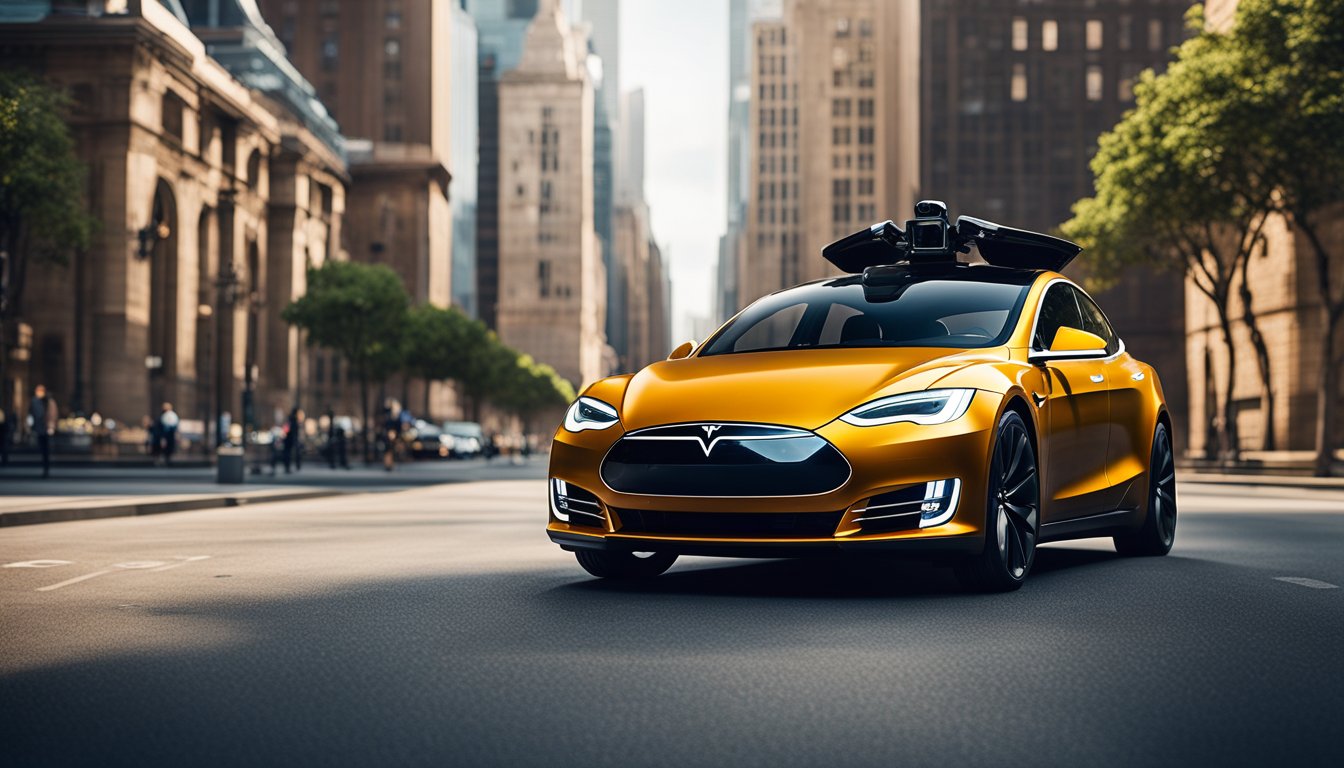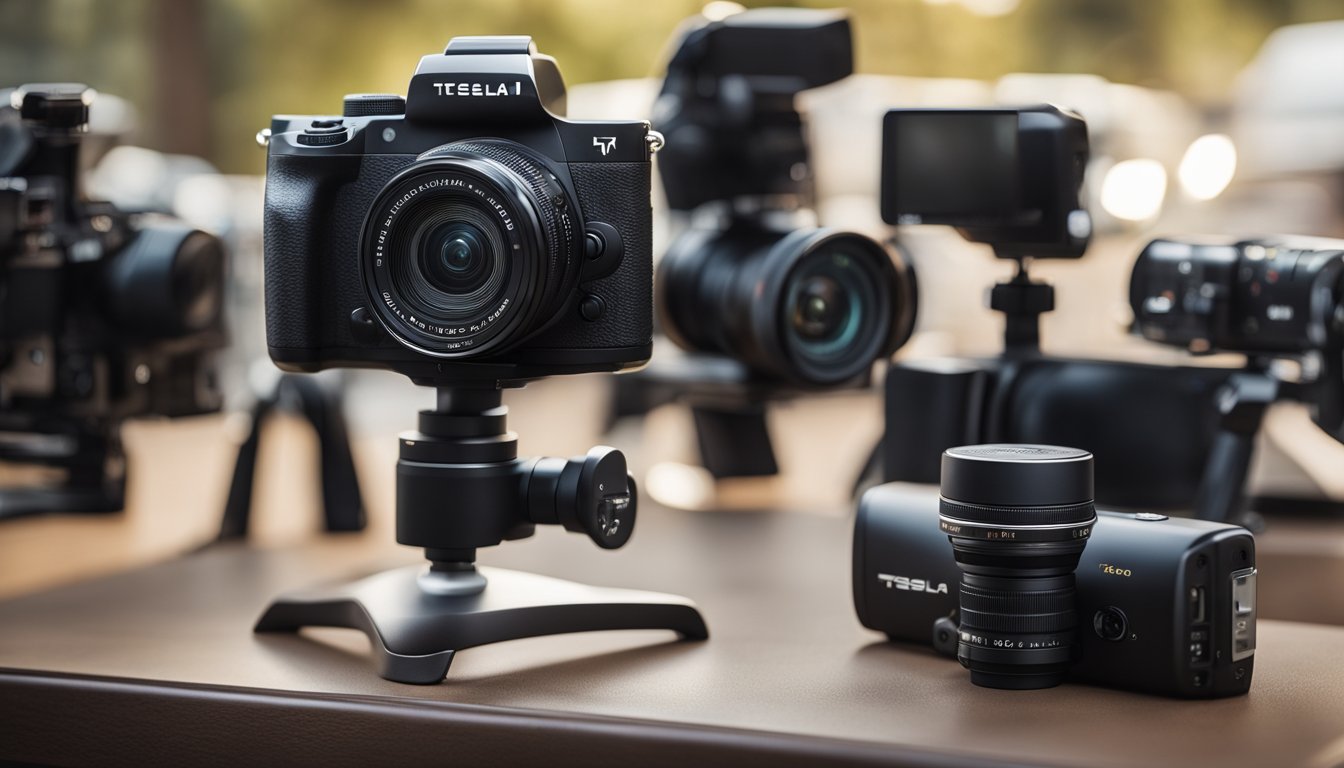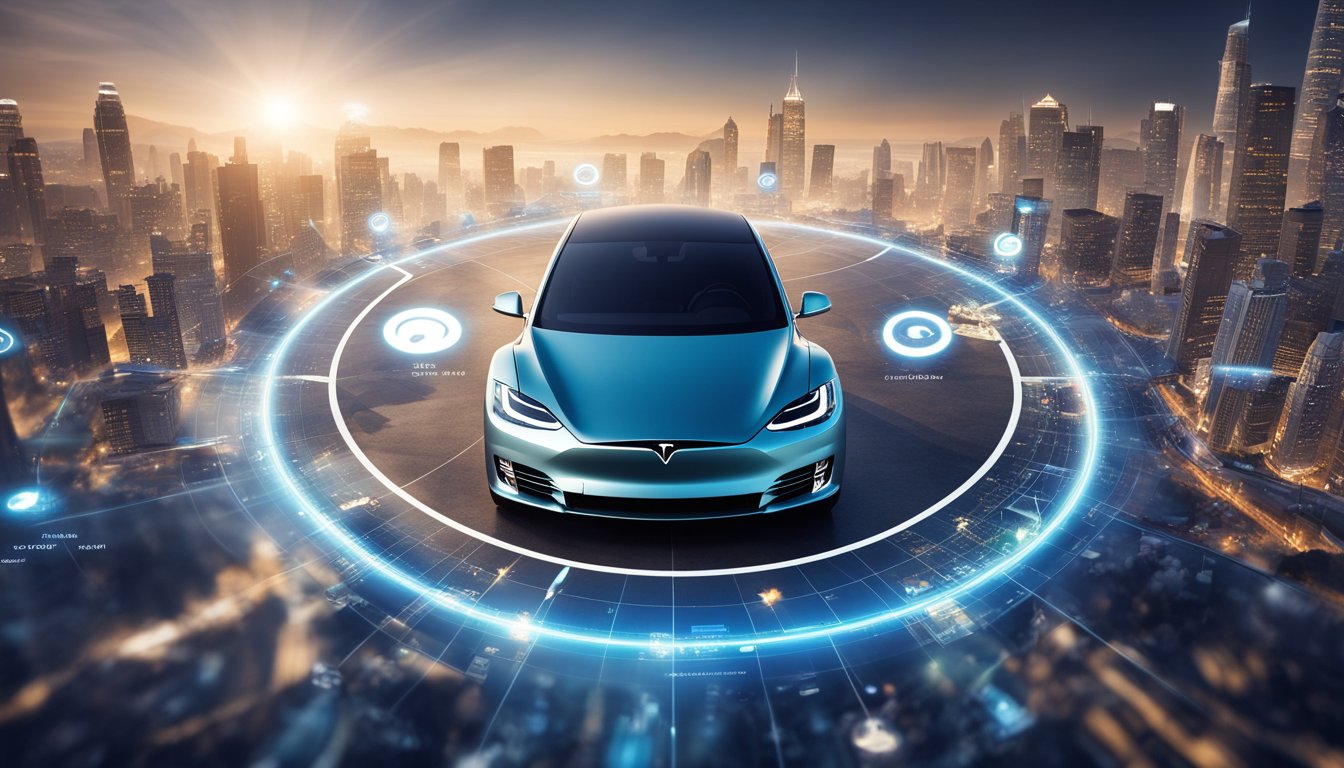Understanding whether Tesla vehicles are equipped with a 360-degree camera feature is an important concern for potential buyers and technology enthusiasts alike. Tesla, known for its innovative approach to car manufacturing, has integrated advanced camera systems into its vehicles. While Tesla does not offer a traditional 360-degree camera feature designed specifically for parking assistance as some other manufacturers do, their vehicles include a comprehensive suite of cameras to support the Autopilot and Full Self-Driving (FSD) capabilities.
The camera system in Tesla vehicles consists of multiple cameras strategically positioned around the car, providing significant coverage around the vehicle’s perimeter. These cameras serve multiple purposes, from enhancing autopilot functionalities to improving overall safety. Although these cameras do provide a high level of visibility around the vehicle, they differ from the conventional bird’s eye view parking systems. Instead, Teslas’ cameras focus on aiding the vehicle’s driving features and are a core part of the Tesla Autopilot system, which aims to facilitate assisted and, eventually, fully autonomous driving.
Key Takeaways
- Tesla equips its vehicles with multiple cameras but does not offer a traditional 360-degree view for parking.
- The cameras support Autopilot and FSD by providing extensive coverage for safety and navigation.
- Tesla’s camera system focuses on enhancing driving assistance rather than conventional parking aids.
History of Tesla’s Camera Technology
Tesla’s camera technology has progressed significantly since the company’s inception, steering its vehicles towards a more autonomous future. You’ll see how Tesla’s approach to vehicular vision systems evolved and transitioned over time to becoming highly reliant on cameras.
Evolution of Autopilot Hardware
When Tesla introduced Autopilot, it marked a substantial shift in car technology. Initially, the Autopilot system utilized a combination of cameras, radar, and ultrasonic sensors to enable its semi-autonomous driving features. As innovation continued, Tesla released Hardware 2 in 2016, which featured more cameras to provide a wide-ranging field of view for the vehicle.
However, in 2021, Elon Musk announced Tesla’s shift away from radar in favor of a camera-based system, hinting at an overarching vision for pure visual recognition. This transition set the stage for Hardware 3, significantly improving computational power and camera performance.

Transition to Tesla Vision
In its quest for a fully autonomous driving system, Tesla introduced Tesla Vision, an advanced suite of camera technologies designed to interpret and understand the driving environment with remarkable precision. This camera-focused approach relies on highly sophisticated neural networks to process visual data.
In late 2022, Tesla took another leap by removing ultrasonic sensors from its newer Model 3 and Model Y vehicles and depending solely on Tesla Vision for Autopilot, Enhanced Autopilot, and Full Self-Driving (FSD) capabilities. This move underscores Tesla’s confidence in visual processing over other forms of sensory input.
Hints from leaks of Hardware 4 suggest that Tesla may be close to achieving a 360-degree view capability, further improving the robustness of Tesla’s camera system. Although it is not currently a feature, the potential lies within the sophisticated hardware Tesla is known for developing.
In summary, Tesla’s camera technology has developed dramatically, with Elon Musk at the helm, pushing towards a future where cameras alone handle the complexities of autonomous driving.
Understanding Tesla’s 360-Degree Camera System
https://www.youtube.com/watch?v=KJUXDqB_Eds&embed=true
« Does RAV4 Have a 360 Camera? Exploring Toyota’s SUV Features
Are 360 Cameras Worth It? Unveiling Their True Value in Today’s Technology »
In this section, you’ll find out how Tesla uses advanced camera technology to provide a comprehensive view around the vehicle. This system is a key part of Tesla’s pursuit of full self-driving (FSD) capabilities.
Components of the Camera System
Tesla’s 360-degree camera system is made up of eight cameras that work together to provide all-around visibility. These cameras are strategically positioned to offer a seamless view of the vehicle’s surroundings. The cameras include:
- Forward-facing cameras: These capture the road ahead and are crucial for FSD.
- Side cameras: Located on the sides, they monitor adjacent lanes and are also used for autopilot functions.
- Rearward-facing cameras: These help with visibility when reversing and monitoring the area behind the car for safe maneuvering.
How the 360-Degree View Works
Each camera in the Tesla provides a certain field of view, which when combined, results in a near 360-degree coverage. This coverage is similar to a bird’s eye view system that some luxury vehicles have. The system is especially helpful while parking, ensuring you have eyes around the entirety of your vehicle. Four of the cameras provide the main pillars of visibility: Front, both sides, and rear. Through the car’s display, you can visualize these four camera feeds simultaneously, giving you a virtually unobstructed view of your car’s environment.
Software Behind the Cameras
The true power of Tesla’s camera system isn’t just the hardware but also the sophisticated software that processes the camera feeds. Software updates can enhance the functionality of these cameras, like the over-the-air updates that Tesla frequently uses to improve FSD features. The onboard computer, part of Tesla’s Hardware 3, processes the data from the cameras, employing a neural network tailor-made for interpreting visual information. This software is continually learning from the data to make better driving decisions and improve safety measures.
Tesla’s Approach to Safety and Cameras
https://www.youtube.com/watch?v=IUE2AEocswE&embed=true
Tesla’s innovative approach to vehicle safety combines cutting-edge camera technology with an advanced autopilot system. This integration aims to enhance your driving experience through superior active safety features and collision avoidance technology.
Active Safety Features
Tesla vehicles are equipped with state-of-the-art cameras providing a comprehensive view around the car to support various safety functions. For instance, the Autopilot and Full Self-Driving (FSD) capabilities, active in many Tesla models, rely heavily on these cameras to navigate the roads safely. While Tesla currently does not provide a traditional 360-degree camera setup for parking or low-speed maneuvering, the cameras do play a crucial role in monitoring the vehicle’s surroundings, enhancing the car’s ability to prevent potential hazards.
- Camera Utilization: A network of cameras supports features like lane-keeping, traffic-aware cruise control, and more.
- Active Alerts: If the system detects any danger, it actively alerts you, contributing to overall road safety.
Collision Avoidance Technology
Tesla’s commitment to safety is also evident in their collision avoidance system. This technology leverages cameras to detect potential collisions with other vehicles, objects, pedestrians, and cyclists. By providing warnings, and sometimes taking automatic corrective actions, Tesla’s system helps to minimize the risk of accidents.
- Autopilot: Helps to prevent accidents by using cameras to monitor the vehicle’s blind spots and the trajectory of other road users.
- Emergency Braking: Automatic emergency braking is triggered if an imminent collision is detected, reducing the force of impact or avoiding it altogether.
Every Tesla comes with these integrated camera systems designed to keep you safer on the road. The cameras play a critical role in enabling Tesla’s advanced driver-assistance features, which collectively work to reduce the likelihood of collisions and to ensure an extra layer of safety for you and your passengers.
Autopilot and Full Self-Driving Capabilities
https://www.youtube.com/watch?v=5xopZHL6tyc&embed=true
When you operate a Tesla vehicle, you’re engaging with some of the most advanced driver-assist technologies on the market. At the core of these systems are Autopilot and Full Self-Driving (FSD) capabilities, designed to provide safety and convenience on the road.
From Autosteer to Navigate on Autopilot
Autopilot includes features like Autosteer, which keeps your car centred in its lane and maintains a distance from vehicles ahead. Over the years, this foundational technology has evolved. The step from basic Autosteer to Navigate on Autopilot marks a significant leap, further automating the driving experience. With Navigate on Autopilot, your Tesla can actively guide itself on highways, suggesting lane changes, navigating exits, and even preparing to transition to different highways. To understand the capabilities of your Tesla’s Autosteer and Navigate on Autopilot, you should refer to the latest updates and guides.
Pure Vision and FSD Betas
Tesla is transitioning to a Pure Vision approach—a camera-based system—that replaces radar with powerful image processing, delivering 360 degrees of visibility. The shift towards using Tesla Vision has paved the way for more intuitive Full Self-Driving (FSD) betas, allowing the car to interpret and navigate the environment using only cameras. While FSD is not fully autonomous driving, it extends the capabilities of Autopilot with features like recognizing and responding to traffic light signals and stop signs, making informed decisions at intersections, and automatic parking. As an owner, your car’s potential grows as Tesla continually enhances its FSD features through over-the-air software updates.
Integration of Cameras with Other Sensors
https://www.youtube.com/watch?v=JXIPA97X9Aw&embed=true
In modern Tesla vehicles, cameras play a crucial role in ensuring safety and autonomy, but they don’t work alone. They coordinate with radar and ultrasonic sensors to create a comprehensive view of the surroundings.
Ultrasonic Sensors and Radar Coordination
Ultrasonic sensors are essential for Tesla’s proximity detection, particularly at low speeds. They help you understand the location of adjacent objects when parking or maneuvering in tight spaces. With the transition towards Tesla Vision, ultrasonic sensors were intentionally removed from some models as of 2023, emphasizing a shift towards camera-only systems. This transition marks a strategic step in sensor integration, focusing on the capabilities of cameras to interpret the car’s environment.
Camera and Sensor Fusion
The fusion of camera input and sensor data is a sophisticated process where multiple sources of information are combined to create a more accurate model of the world around your Tesla. Each camera — covering various angles — collects visual data, which is synthesized with information from any remaining sensors to inform driving decisions. This multi-point analysis allows Tesla’s system to operate reliably whether you’re cruising down the highway or inching into a parking spot.
User Experience with Tesla Cameras
https://www.youtube.com/watch?v=a66KqUCnn5c&embed=true
Tesla vehicle cameras play a crucial role in enhancing both your security and driving comfort. With features like Sentry Mode and detailed dashcam functionality to assist in monitoring your vehicle, combined with cameras that facilitate easier manoeuvring and parking, Tesla seeks to elevate your experience as an owner.
Sentry Mode and Dashcam Functionality
Sentry Mode keeps a watchful eye on your Tesla when it’s parked. It uses the car’s cameras to detect potential threats or disturbances around the vehicle. If triggered, Sentry Mode records footage that can be invaluable if there’s an incident involving your vehicle. As an owner, you’ll appreciate having an integrated dashcam system that records multiple angles around the car while driving, offering peace of mind and an added layer of security.
Manoeuvring and Parking Assistance
Tesla’s camera array offers increased visibility which simplifies manoeuvring in tight spaces. Despite the absence of a traditional 360-degree bird’s-eye view, the available cameras work together to give you a comprehensive view of your vehicle’s surroundings, making it easier to park and navigate in congested areas. Owners find this particularly useful for fitting into tight parking spots or when reversing in tricky locations.
Vehicle Specific Camera Features
https://www.youtube.com/watch?v=l94vMQaKQ3Y&embed=true
Tesla’s lineup of electric cars offer various camera features tailored to specific models. Here’s what you need to know about the Model 3 and Model Y, as well as the Model S and Model X.
Model 3 and Model Y
The Model 3 and Model Y are equipped with multiple cameras that contribute to the vehicle’s safety and Autopilot functionalities. Specifically, your Model 3 or Model Y includes a cabin camera which is designed to detect driver inattentiveness and give audible alerts if it senses that your eyes are not on the road when Autopilot is engaged. These features are part of the Tesla Vision system tailored for enhanced vehicle safety.
Model S and Model X Features
When it comes to the Model S and Model X, Tesla hasn’t stayed behind. These models also boast a series of cameras around the vehicle providing a near 360-degree view to support driver awareness. Positioned strategically around the car, including the front fender and near the license plate, these cameras serve as your eyes around the entire vehicle, feeding information to assist with parking, navigating tight spaces, and enhancing Autopilot’s functionality.
Enhancing Driver Assistance Systems
https://www.youtube.com/watch?v=UKZW606hA3I&embed=true
In your Tesla, the journey toward advanced driver assistance is always evolving. You’re at the center of this progression, where each update brings you a step closer to a more intuitive driving experience.
Blind Spot Monitoring
When you’re on the road, blind spot monitoring is your vigilant co-pilot. Your Tesla continuously tracks the areas beside and behind your vehicle, alerting you to nearby cars that might otherwise escape your gaze. Essentially, this adds an extra layer of safety as the Tesla’s cameras and sensors are designed to recognize other vehicles to prevent possible collisions.
Autonomous Driving Progress
Tesla is synonymous with pushing the boundaries of autonomous driving. While fully autonomous driving isn’t yet a reality, your Tesla comes equipped with features that make significant strides in that direction. Utilizing cameras and processing power, your car interprets vital information like road markings and the behavior of other vehicles. This is the brain behind the Autopilot and Full Self-Driving capabilities, which aim to reduce your workload and enhance your safety on the road.
Global Software Updates and Regional Variations
Tesla’s approach to software updates can vary based on your location, particularly when comparing models in North America to those in China. These differences and the over-the-air update mechanisms that deliver new features are key to understand how your Tesla stays current.
North America versus China Models
In North America, Tesla vehicles often receive software updates that can include enhancements like the potential for a 360-degree camera view. However, the hardware equipped in your Tesla must support these features for a software update to enable them. Tesla model updates can also differ by region, such as the Model 3 and Model Y, which experienced the removal of ultrasonic sensors in favor of Tesla Vision in many global markets, followed by the Model S and Model X in 2023.
Chinese Tesla models may sometimes receive distinct features catered to regional preferences or regulations, which can lead to differences in software offerings between regions.
Over-the-Air Update Mechanisms
Your Tesla receives updates through an over-the-air (OTA) mechanism, which means you get new features and improvements without having to visit a service center. For instance, Tesla recently rolled out an update allowing owners to preview camera video feeds from Autopilot cameras. These OTA updates may vary depending on the model of your vehicle and your region, as Tesla prioritizes different updates according to regional market needs and regulations.
Customer Feedback and Influence on Development
Tesla’s approach to incorporating customer feedback into the development of new features, including updates to their vehicles’ camera systems, heavily relies on direct interactions and community discussions. Your voice, as a Tesla owner or enthusiast, plays a pivotal role in how the company shapes its future updates and innovations.
Social Media Interactions
Elon Musk, the CEO of Tesla, is known for being highly active on Twitter. He often personally engages with the owner community and the broader public on this platform. Your tweets directed at Musk and Tesla can grab their attention and sometimes lead to real-time feedback or even the consideration of feature requests.
Owner Community and Feature Requests
The Tesla owner community has direct channels to suggest and push for new features, including improved camera systems such as the potential for a 360-degree camera view. Forums and official Tesla channels collect these insights, and the company has been known to track and implement ideas that resonate with owners. Through these community interactions, you have the opportunity to influence the development of Tesla’s technology and feature set.
Frequently Asked Questions
https://www.youtube.com/watch?v=qEoTvqkRkfE&embed=true
Exploring Tesla’s camera capabilities can be quite intriguing. You’re likely curious about how the birds eye view feature operates, whether there will be updates, and what the new models will include. Let’s answer some of your top questions on this topic.
How does Tesla’s birds eye view feature work?
Tesla vehicles use a combination of cameras and sensors to create visibility around the vehicle. However, as of now, they do not offer a true 360-degree birds eye view. The closest feature they have is the visualization provided by multiple cameras for enhanced parking assistance.
Is there a 360 camera update coming for Tesla cars?
There have been discussions among enthusiasts and rumors suggesting that future updates to Tesla’s Autopilot software may offer enhanced camera capabilities. However, there are no official announcements confirming a 360 camera feature as of now.
Can you get a 360 camera kit for a Tesla?
Tesla cars are highly integrated systems with proprietary technology, making aftermarket additions like a 360 camera kit challenging. It is not recommended to attempt adding such a kit as it could interfere with the existing sensor and camera setup.
Do any Tesla models offer a birds eye view for parking?
As of the provided knowledge, no Tesla model offers a full birds eye view for parking. Tesla’s current Autopilot system provides visualizations and warnings based on camera input and ultrasonic sensors for parking assistance.
Will the Tesla Cybertruck come with a surround camera system?
Tesla has advertised that the Cybertruck will have Autopilot capabilities, which suggests the inclusion of multiple exterior cameras. However, whether it will feature a surround or 360-degree camera system upon release has not been confirmed.
Are there interior cameras in Tesla vehicles?
Select Tesla models, such as the Model 3 and Model Y, are equipped with an interior camera. These are primarily intended for Autopilot system development and future use in Tesla’s planned ride-sharing network.










